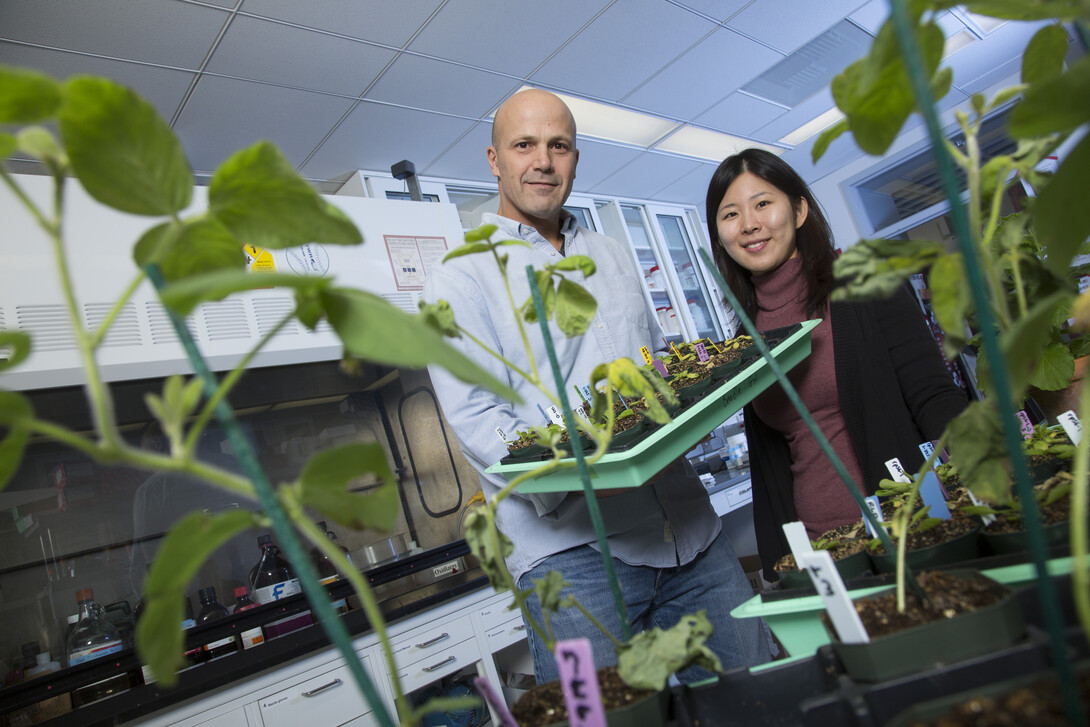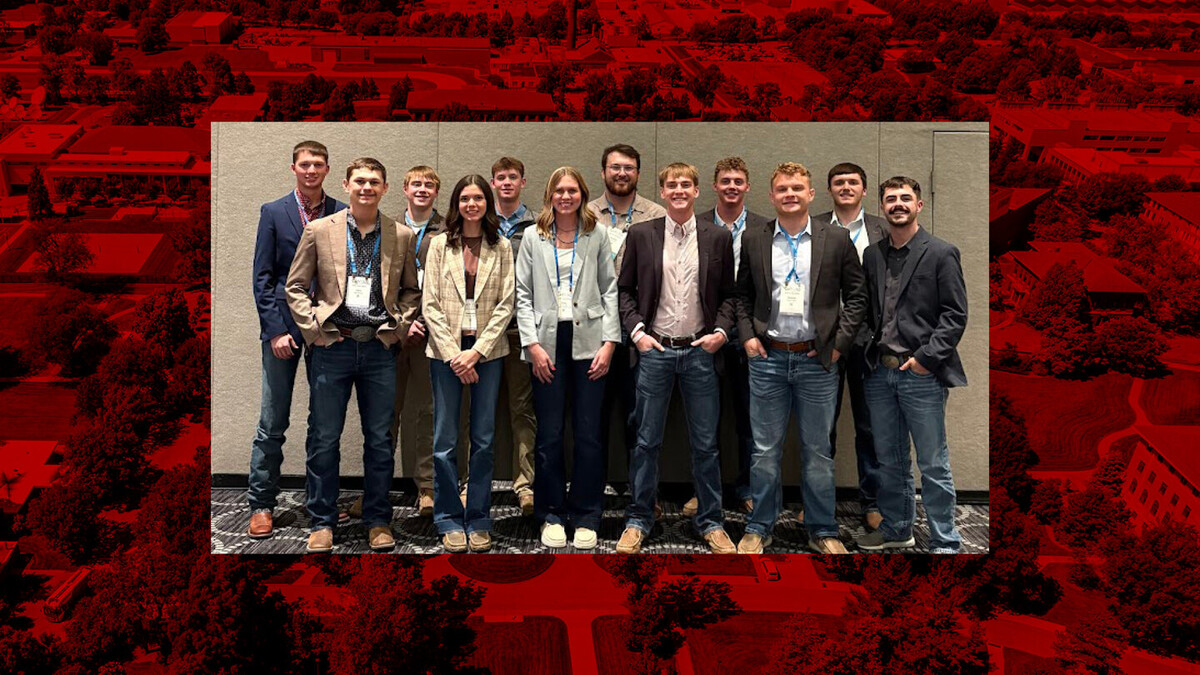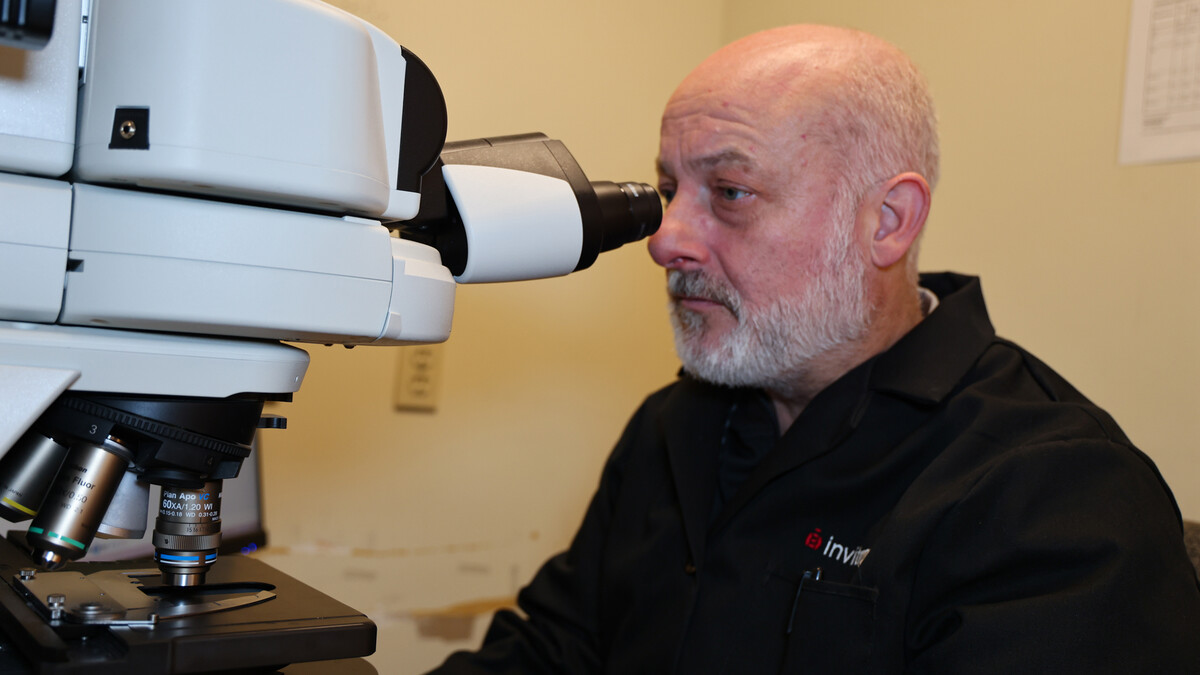
Feb. 20, 2013
LINCOLN, Neb. — By studying how a disease-causing bacterium attacks plants, University of Nebraska-Lincoln researchers have made important discoveries about how plants defend themselves against invaders. The information is helping them improve agricultural crops' armor against a broad range of diseases.
Plant pathologist James Alfano, graduate student Anna Joe and co-authors recently reported their findings in the European Molecular Biology Organization Journal. The work builds on Alfano's earlier discovery of a component in plant immunity that was reported in Nature, the international weekly journal of science, in 2007.
"It's exciting," said Alfano, a member of UNL's Center for Plant Science Innovation. "My work has always been about trying to make plants better at tolerating biotic stress. This paper is getting very close."
For Alfano, the trail to improve crops began with a bacterial pathogen. Pseudomonas syringae disables a plant's immune response by using a syringe-like mechanism to inject virulence proteins into plant cells, which helps the pathogen infect its host. He identified HopU1 as one of the bacterium's toxic proteins that suppresses immunity.
Following this lead, Alfano and colleagues studied how HopU1 operates. They found that it modifies RNA-binding proteins, a type of protein important in the process of turning a plant's DNA code into proteins. RNA-binding proteins were not previously known to be part of the immune system.
In the current journal article, Alfano's team and scientists at the Sainsbury Laboratory in Norwich, U.K., report that they have identified how one of the RNA binding proteins targeted by HopU1, glycine-rich protein 7, or GRP7, acts in the plant's immune system. They discovered that GRP7 helps makes receptor proteins, which sit on plant cell walls and act as a surveillance system to detect pathogens. By knocking out GRP7, the pathogen reduces the number of receptor proteins and, therefore, is more likely to go undetected long enough to infect its host.
In addition to helping elucidate how this bacteria attacks plants, identifying GRP7's involvement in innate immunity gave the researchers a potential tool to help boost immunity in plants. They genetically modified Arabidopsis, a well-studied plant, to make more GRP7 and found that the change enhanced the plant's ability to fend off pathogens, presumably by boosting the number of receptor proteins.
They also found that the immunity boost is effective against many other pathogens, including many viruses and fungi, as well as bacteria.
"It's actually a really good thing when you find something that's more broadly important for a number of diseases," Alfano said. "It really increases its potential value." It's particularly important for Midwestern agricultural crops, which are generally more susceptible to fungi and insects than bacteria.
Researchers now are testing whether proteins like GRP7 can enhance immunity in soybeans.
Next, they will test for strengthened immunity in other agricultural crops and against a wider range of pathogens. They also continue studying the molecular pathways involving GRP7 to better understand and find new ways to improve innate immunity in plants.
Because GRP7 also is found in animals, including humans, Alfano's research may lead to improvements in human health as well.
His co-authors are: Anna Joe from the UNL Center for Plant Science Innovation and the School of Biological Sciences; Byeong-ryool Jeong from the UNL Center for Plant Science Innovation and the Department of Plant Pathology; Valerie Nicaise, Freddy Boutrot, Isa Westedt and Cyril Zipfel from the Sainsbury Laboratory; and Dorothee Staiger from the University of Bielefeld, Germany
Grants from the National Institutes of Health, the National Science Foundation, the U.S. Department of Agriculture and the Nebraska Soybean Board help fund this research.
Jim Alfano, Ph.D.Professor
Plant Pathology
402-472-0365
jalfano2@unl.edu Gillian Klucas Dan Moser
IANR News Service
402-472-3030
dmoser3@unl.edu
NIH grant #: 1R01AI1069146-01A2







